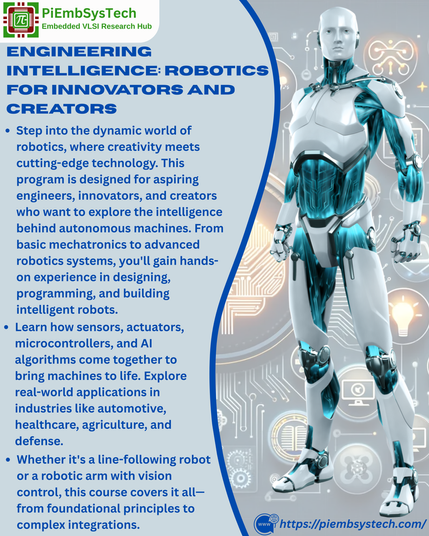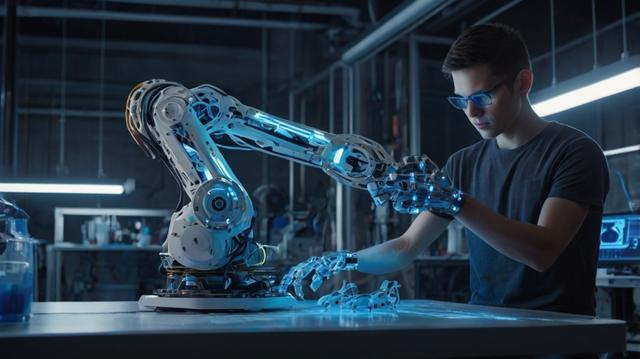How 3D Printing is Revolutionizing Robotics: The Future is Already Here
947 words, 5 minutes read time.
https://open.spotify.com/show/6Dju7wlivFkqJvaKon5nDt
3D printing and robotics are two technologies that have reshaped industries and ignited the imagination of creators worldwide. When these two powerhouses come together, they create a synergy that allows for unparalleled innovation and creativity. Whether you’re an engineer looking to design a complex robot or a hobbyist building your first robotic arm, 3D printing has made robotics more accessible, cost-effective, and customizable. In this blog post, we’ll dive into how 3D printing is revolutionizing the field of robotics, explore some standout projects, and provide insights on how you can get started in this fascinating intersection of technology.
Understanding the Role of 3D Printing in Robotics
At its core, 3D printing is a manufacturing process that builds objects layer by layer from digital designs. It’s celebrated for its ability to create intricate shapes that traditional manufacturing struggles to replicate. Robotics, on the other hand, demands precision and complexity in its components. The synergy is clear: 3D printing provides robotics with the flexibility to prototype and build custom parts quickly and affordably.
One of the primary benefits of 3D printing in robotics is its ability to produce highly customized parts. Unlike mass-manufactured components, 3D-printed parts can be tailored to specific projects, allowing for intricate designs that perfectly fit a robot’s requirements. Additionally, 3D printing is a cost-effective solution for creating prototypes. Traditional manufacturing can be prohibitively expensive when it comes to iterative design, but 3D printing makes rapid prototyping not only possible but practical.
The application of 3D printing in robotics is growing rapidly. According to a report by Petoi, 3D printing is instrumental in open-source robotic projects, enabling enthusiasts to bring their designs to life without needing industrial-level resources. From creating prosthetics to developing drones, the versatility of 3D printing knows no bounds in the robotics domain.
Inspiring 3D-Printed Robotics Projects
The world of 3D-printed robotics is brimming with inspiring projects. The InMoov project is a prime example. This open-source initiative allows anyone with a 3D printer to build a humanoid robot. Designed by Gael Langevin, InMoov showcases the potential of 3D printing to democratize robotics. Hobbyists and educators worldwide have used this project to teach robotics, programming, and engineering concepts.
Another standout project is the DIY robotic dog. With tutorials available online, such as the 3D Printed Robot Dog DIY Tutorial on YouTube, even beginners can embark on building their robotic companions. These projects highlight how 3D printing enables creativity, empowering individuals to experiment with designs and learn through hands-on experience.
Advances in Swarm 3D Printing and Large-Scale Solutions
Innovations like swarm 3D printing are pushing the boundaries of what’s possible. Swarm 3D printing involves multiple robots working together to print a single object, as detailed on Wikipedia. This approach is not only faster but also allows for the creation of larger and more complex structures.
Additionally, large-scale 3D printing solutions have emerged, utilizing robotic arms to produce sizable components for industrial applications. The CEAD Group is a leader in this field, developing robotic systems capable of creating durable parts for industries like aerospace and construction. These advancements underline how 3D printing is no longer confined to small-scale projects but is making significant inroads into large-scale manufacturing.
How to Build Your Own 3D-Printed Robots
For those eager to get started with 3D-printed robotics, the good news is that the barrier to entry has never been lower. Tutorials like How to Build a 3D Printed Robot Arm provide step-by-step guidance for beginners. These resources often include free digital designs that can be downloaded and printed at home, making it easier than ever to dive into robotics.
When building your own robots, choosing the right 3D printer and materials is crucial. PLA and ABS are common materials for 3D-printed robotic parts, offering strength and durability. It’s also important to understand the limitations of your 3D printer and plan your design accordingly. While 3D printing is a powerful tool, complex assemblies may require multiple parts and careful post-processing.
Industrial Applications of 3D Printing in Robotics
Beyond DIY projects, 3D printing is transforming industries that rely on robotics. In healthcare, for example, 3D printing is used to create customized robotic surgical tools that improve precision and reduce patient recovery times. In manufacturing, robotic arms equipped with 3D printing capabilities are being deployed to build components directly on production lines. According to KUKA Robotics, integrating 3D printing with robotics is a game-changer, streamlining processes and reducing costs.
The Future of Robotics with 3D Printing
As materials and technology continue to evolve, the future of 3D printing in robotics looks brighter than ever. Emerging materials like carbon fiber-reinforced polymers are making 3D-printed parts stronger and lighter, opening up new possibilities for robotic applications. Additionally, the integration of artificial intelligence with 3D printing is enabling smarter and more autonomous robots.
However, challenges remain. Scalability and sustainability are ongoing concerns, as is the need for improved recycling of 3D-printed materials. Despite these hurdles, the opportunities far outweigh the challenges. As The Robot Report notes, 3D printing is poised to play a pivotal role in the next wave of robotics innovation.
Conclusion
3D printing and robotics are a match made in technological heaven. From enabling rapid prototyping to empowering individuals to build their own robots, the impact of 3D printing on robotics is profound and far-reaching. Whether you’re an industry professional or a curious hobbyist, there’s never been a better time to explore the potential of these technologies. So, fire up your 3D printer, download a design, and start building the future—one layer at a time.
For more ideas and inspiration, explore open-source communities and projects like InMoov or visit tutorials on platforms like YouTube. The only limit is your imagination.
D. Bryan King
Related Posts
Rate this:
#3DPrintingCostEffectiveness #3DPrintingEducation #3DPrintingEnthusiasts #3DPrintingForBeginners #3DPrintingForRobotics #3DPrintingInAerospace #3DPrintingInHealthcare #3DPrintingMaterials #3DPrintingProjects #3DPrintingSoftware #3DPrintingTechnology #3DPrintingTutorials #3DPrintedMachines #3DPrintedRobots #ABSForRobotics #accessibleRobotics #additiveManufacturing #advancedRobotics #advancedRoboticsTools #AIInRobotics #carbonFiber3DPrinting #customRobotParts #cuttingEdgeRobotics #DIY3DPrinting #DIYRobotics #educationalRobotics #futureOfRobotics #homeRoboticsProjects #humanoidRobots #industrial3DPrinting #industrialRobotics #InMoovProject #innovativeRobotics #largeScale3DPrinting #openSourceRobots #PLAForRobots #printingRoboticParts #rapidPrototyping #robotBuildingTips #robotDogDIY #robotMakers #roboticApplications #roboticArm3DPrinting #roboticArmDesign #roboticAutomation #roboticAutomationTools #roboticBuildingGuide #roboticDesignTrends #roboticInnovation #roboticPrototyping #roboticSystems #roboticTechnology #roboticsInnovation #roboticsTutorials #smartRobots #swarmRobotics

